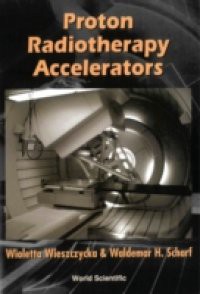Hadronic radiotherapy uses particle beams to treat tumors located near critical body structures and tumors that respond poorly to conventional photon and electron beam radiotherapy. Initial research in hadronic radiotherapy was performed using accelerators built for physics research. The good results of the proton and ion therapy programs have enhanced the tendency to use protontherapy as a routine method. There are about 20 working protontherapy facilities (first, second and third generation) and more than 30 centers are planned.This book presents the first comprehensive overview of the field with a discussion on the fundamental basis of particle physics and radiobiology, as well as review of clinical and technical specifications and designs for proton radiotherapy. In particular, the current designs of proton and heavy ion accelerators, beam delivery systems, gantries, beam monitoring and dosimetry systems, control and safety systems, patient positioning and immobilization devices, and ancillary treatment facilities are widely discussed.Contents: Physical and Radiobiological Properties of HadronsStatus of Clinical Research in ProtontherapyHadrontherapy Facilities World-WideRequirements for Hadrontherapy CentersProtontherapy AcceleratorsBeam Transport and Delivery SystemsProton GantriesRadiation DetectorsTreatment Ancillary FacilitiesControl System of the Protontherapy CenterShielding for Proton FacilityGlobal Costs and Financial Analysis of the Activities of the Proton CenterProposal of a Dedicated Protontherapy FacilityReadership: Engineers, medical physicists and physicians involved in the design and construction of radiotherapy accelerators, undergraduate and graduate students in high energy accelerator and biomedical physics, radiotherapists.Key Features:The first book on disruption managementThe topics covered are large in scope and extensive in content, from production and airline scheduling to supply chain managementThe main author is internationally known as the pioneer of disruption management, in both industry and academia

